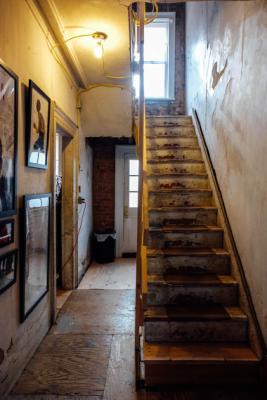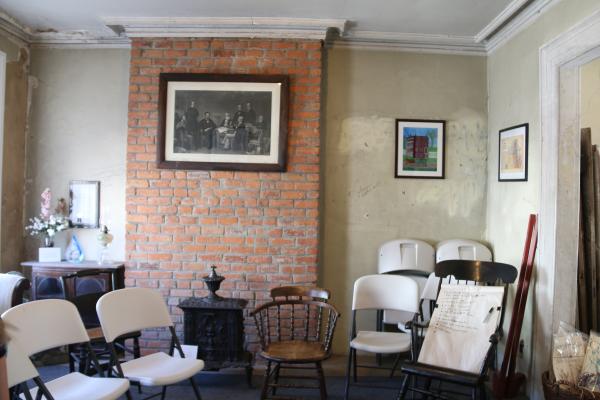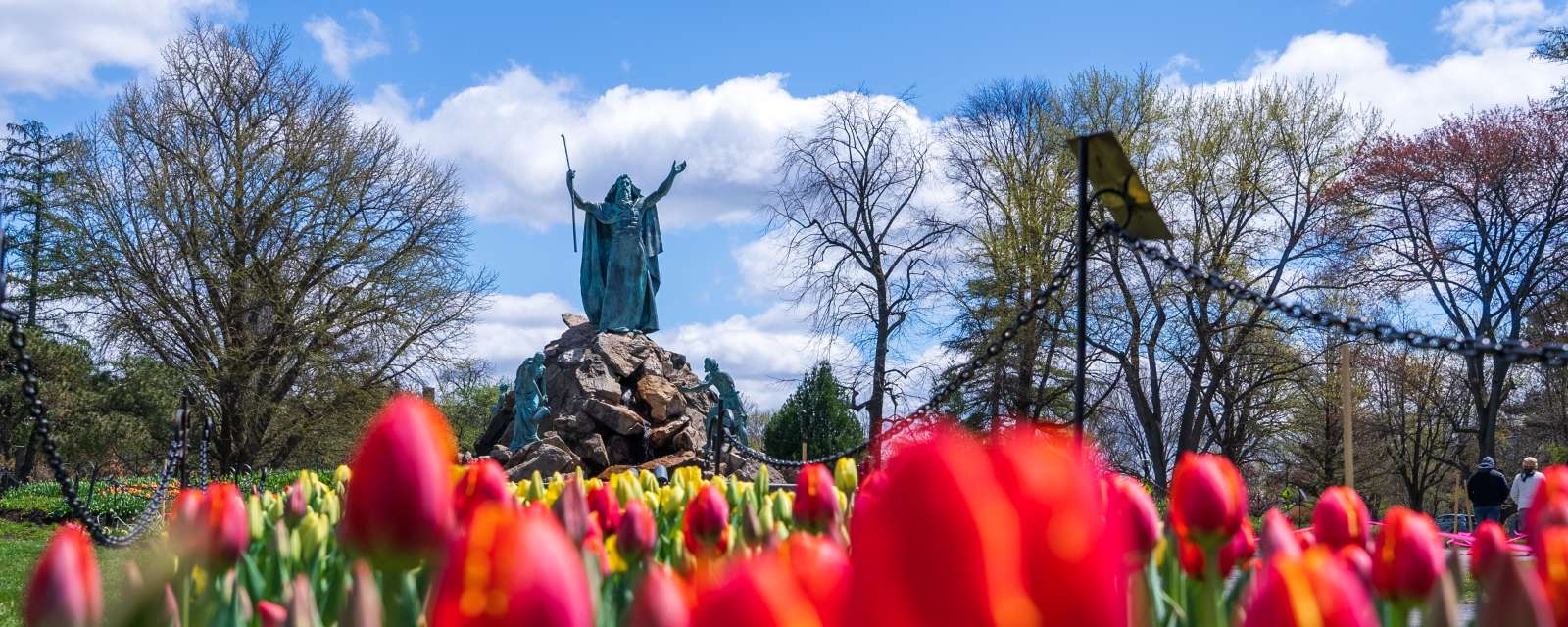
By Mary Liz Stewart
Year of construction - 1847
Constructed by - Unknown
Original purpose - Personal residence
Current owner - Underground Railroad Education Center
Current purpose/plans - restore the entire building to its original appearance
If this building could speak, what would it say - "Reject slavery and racism, affirm the dignity of every human being, and embrace economic justice for all."
The Stephen and Harriet Myers Residence, an elegant three-story brick, ten-room Greek Revival townhouse, is a beacon of hope and a contributor to pride of place and a contributor to neighborhood revitalization.

In the mid-1850's The Myers Residence was home to Stephen and Harriet Myers, leading figures in Underground Railroad movement activism in the Capital Region and beyond, and to their four children. Stephen was born enslaved in Rensselaer County, receiving his legal freedom in 1818. Harriet was born free. They quickly rose together to a position of prominence among Capital Region abolitionists. Their home was the place where the Vigilance Committee office was maintained and where the Vigilance Committee held its strategic meetings deciding how to respond to the needs of Freedom Seekers coming into the Capital Region, how to extinguish the institution of slavery that gripped the nation, and how to advocate for equality in housing, jobs, education, and voting rights. Records indicate that 50 freedom seekers came seeking counsel at The Myers Residence.
Built in an up and coming residential neighborhood in 1847 by John Johnson, an African American boat captain who conducted his business on the Hudson River, and brother to Harriet Myers and brother-in-law to Stephen Myers, the home was built with many distinguishing features, including crown molding, medallions, 12' ceilings, and gas lighting. Admitted onto the National Register of Historic Places in 2004 for three of the four standards, restoration of the exterior of The Residence was only completed in 2015, with front and rear entryways still awaiting attention. The tall, six-over-six windows allow bright, streaming light to illuminate the ten rooms. The small front yard boasts foliage and flowers that, in season, bring vibrant color to the building's street view.

The interior's need for full restoration, as evidenced by peeling paint, wall cracks, exposed brick, and water damaged ceilings, has not diminished the vibrant, alive character maintained by the activities held in the building and contributed to by the many people who visit or who volunteer in the building. While the vision is to restore the entire building to its period of historic significance, no room is currently left unused. Work space, library, reading room, art and music studios, a collections room are but some of the contemporary uses of the interior. The historic, period furniture that populates the front parlor is expected to be sat upon. The artifacts are expected to be handled. Engaging with history is what this building is about.

The bones of this building tell its story. Original floorboards and stair treads mark the places where these abolitionists and freedom seekers walked. The front hallway is imbued with the presence of Vigilance Committee members and Freedom Seekers who came to this building to deal a blow to the institution of slavery. The walls, near to collapsing when Underground Railroad History Project bought the building through foreclosure in 2004, now stand tall and proud, a testimony to the importance of this story and its activists and its relevance for today. The Stephen and Harriet Myers Residence is a place where voices of the past converge with contemporary voices to articulate the story of the Underground Railroad movement in its relationship with the continuing freedom struggle of today.
The impact of The Myers Residence goes beyond the wall of the building. Surrounding The Myers Residence six vacant property parcels have been brought back to life through the labor of many volunteers, providing a park like environment with grass, gardens, and archeological dig sites, now known as The Myers Residence Campus. The gardens, all started by teen volunteers, pay tribute to the abolitionists who lived on the garden properties. Master gardeners and adult volunteers help to maintain these spaces today. These grounds provide an exciting resource to the surrounding community as a space where children can play and programs can take place.
Each year the Myer Residence and Underground Railroad History Project sponsor a 4th of July Celebration using the theme of Frederick Douglass' 1852 speech "What to the Slave is Your Fourth of July?" as a thematic starting point for a renewed discussion of the connections of the past to the present. The intellectual portion of the program is followed by food and music and plenty of socializing. During July and early August the Young Abolitionist Teen Scholars' Institute, composed of 40 teens and Focus Group Facilitators who engage in a transformative service learning experience, bring vitality to The Myers Residence Campus.
What started as a personal research project by Paul and Mary Liz Stewart has morphed into a full blown historic site that employs an Executive Director, a Director of Programs, a volunteer financial manager, a Board of Directors, small and large programs, and numerous volunteers who manage various aspects of the workings of Underground Railroad History Project and The Stephen and Harriet Myers Residence. This is a building that brings the past alive in its relevance with today, and stands as an inspiration to us today to carry on working for the freedom and justice promised to all in the founding documents of this nation.
Author bio: Mary Liz Stewart is the co-founder and Executive Director of the Underground Railroad History Project of the Capital Region. A former social studies teacher, Stewart how heads up programming and outreach for the URHPCR and leads the Young Abolitionist Teen Scholars Institute, a partnership with the City of Albany's Summer Youth Employment Program. She also co-organizes the annual Underground Railroad History Conference in Albany each year.
The Stephen and Harriet Myers Residence is located at 194 Livingston Avenue in Albany, NY. The home is open Monday - Saturday 12pm-8pm. Tours for individuals offered by request during regular business hours. Tours for groups need to be scheduled in advance by calling (518) 432-4432 or emailing info@undergroundrailroadhistory.org. The Myers Residence was recently featured in a "We Are NY" film.






